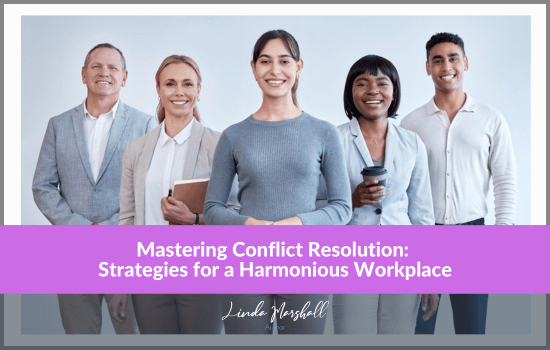How we manage conflict resolution significantly impacts our strengths and the quality of our relationships. Skilled individuals use their emotional intelligence, emphasizing empathy, to manage their emotions, understand others’ perspectives, and communicate strategies effectively.
THE POWER OF EMOTION | CHAPTER 12 | OVERVIEW
Practical and Effective Conflict Resolution Strategies
 It's a common experience for many of us to seek out practical and effective conflict resolution and communication strategies. We all face challenging situations, regardless of fault or the emotions involved, and we all desire swift resolutions.
It's a common experience for many of us to seek out practical and effective conflict resolution and communication strategies. We all face challenging situations, regardless of fault or the emotions involved, and we all desire swift resolutions.
Conflict is unavoidable in human interactions, whether in the workplace, home, or social settings. While disagreements and misunderstandings are natural, managing these conflicts can profoundly impact our relationships, productivity, and overall well-being. Swift and effective conflict resolution is not just about restoring peace—it's about fostering understanding, building stronger connections, and creating an environment where everyone feels heard and respected. This blog will delve into practical and effective strategies for resolving conflicts, underlining the importance of addressing issues promptly and thoughtfully. Whether you're grappling with a heated argument at work or a personal dispute at home, these techniques will equip you to navigate conflicts confidently and clearly. Let's investigate the art of conflict resolution and learn how to transform disagreements into opportunities for growth and collaboration.
How Does Emotional Intelligence Support Conflict Resolution?
Emotional intelligence (EI) plays a significant role in conflict resolution. This connection is evident through several vital aspects, such as:
-
Self-Awareness
-
Self-Regulation
-
Motivation
-
Empathy
-
Social Skills
Emotional intelligence enhances conflict resolution by enabling individuals to manage their emotions, understand others’ perspectives, and communicate effectively. This combination of skills is crucial for resolving conflicts respectfully and empathetically and is conducive to long-term harmony.
Should We Resolve Conflict Situations Quickly?
Resolving conflict situations quickly can be beneficial, but balancing speed with effectiveness is essential.
When communication breaks down, there are times when the quicker you resolve the issue in real-time, the easier it will be to repair the relationship, but not always!
Resolving a problem face-to-face is far more effective when all parties can see and read body language and facial expressions. When managing conflict, there is much to consider, including the benefits of the resolution timing.
(Don't miss these practical tips for controlling your emotions in the workplace next)
Benefits of Resolving Conflicts Quickly
Considering the following benefits of quick resolution will support you in decision-making:
-
Prevents Escalation
-
Maintains Relationships
-
Reduces Stress
-
Improves Productivity
-
Minimizes Disruption
Potential Drawbacks of Rushing Conflict Resolution
Contemplating these drawbacks for quick conflict resolution will aid you in a positive outcome.
-
Incomplete Understanding
-
Superficial Solutions
-
Lack of Buy-In
-
Emotional Overload
Balancing Speed and Effectiveness
While resolving conflicts quickly can offer significant benefits, it is crucial to ensure the resolution process is thorough and addresses the root causes. Balancing speed with a careful and inclusive approach will lead to more sustainable and satisfactory outcomes.
-
Assess the Situation
-
Create a Structured Process
-
Set Clear Timelines
-
Encourage Open Communication
-
Follow Up
Empathy In Conflict Management
Without empathy, conflict would harm your team and your effectiveness. Use your empathy skills to lower the temperature of the situation.
As you will see below, empathy is one of the most powerful conflict resolution strategies you have at your disposal. But unfortunately, empathy is also one of the significant challenges I observe during professional consultations. Generally, people aren't out to hurt, provoke or aggravate their colleagues; they are more likely to lack empathy and struggle to put themselves in their "colleague's position."
For this reason, we need to strengthen and develop our emotional intelligence skills to enhance communication. In doing so, empathy becomes a more natural practice. Being empathetic to the individual(s) you conflict with can make all the difference in resolving the situation. When others witness you trying to understand their perspective, they appreciate it and may be more willing to compromise or see your point of view. As such, improving emotional intelligence and empathy is an incredibly worthwhile pursuit.
(Visit this post next to learn more about why empathy is the foundation for emotional intelligence)
Effective Strategies To Resolve Conflicts
Conflict resolution is crucial in both personal and professional settings. Here are some effective strategies to resolve conflicts:
-
Active Listening
-
Focus and Attention: Give your full attention to the speaker.
-
Reflect and Clarify: Repeat what you heard to confirm your understanding.
-
Nonverbal Cues: Use appropriate body language to show you are engaged.
-
-
Empathy and Understanding
-
Perspective Taking: Try to see the situation from the other person's point of view.
-
Acknowledge Feelings: Validate the emotions involved, even if you disagree with the perspective.
-
-
Clear Communication
-
I-Statements: Use "I" statements to express your feelings without blaming others (e.g., "I feel…" instead of "You always…").
-
Specific and Direct: Be clear and specific about what the issue is and what you need.
-
-
Remain Calm and Composed
-
Manage Emotions: Take deep breaths or a break to maintain calmness.
-
Avoid Escalation: Keep your tone and body language neutral to avoid escalating the conflict.
-
-
Seek Common Ground
-
Shared Interests: Identify common goals or interests to find a basis for agreement.
-
Collaborative Solutions: Work together to brainstorm solutions that satisfy both parties.
-
-
Problem-Solving Approach
-
Identify the Problem: Clearly define the issue at hand.
-
Generate Options: Discuss possible solutions without judgment.
-
Evaluate Solutions: Assess the pros and cons of each option together.
-
Agree on a Solution: Choose an acceptable solution for both parties.
-
-
Set Boundaries and Guidelines
-
Ground Rules: Establish rules for the discussion to ensure it remains respectful and productive.
-
Boundaries: Set clear boundaries regarding acceptable behaviour and communication.
-
-
Use Mediation if Necessary
-
Neutral Third Party: Involve a neutral mediator to facilitate the discussion if the parties cannot resolve the conflict internally.
-
Structured Process: Follow a structured mediation process to ensure fairness and impartiality.
-
-
Follow Up and Review
-
Check-in: Regularly check in with each other to ensure the solution is working.
-
Adjust if Needed: Be willing to make adjustments if the initial solution does not fully resolve the conflict.
-
-
Learn and Improve
-
Reflect: Reflect on what caused the conflict and how it was handled.
-
Continuous Improvement: Use the experience to improve conflict resolution skills for the future.
-
Remember, conflict can be a good thing! Learn to manage its destructive potential and harness its constructive energy.
Do you want to learn more about conflict resolution and practical strategies? In my new book, The Power of Emotion, this is a subject I cover at length. Order your copy today to learn everything you need about supporting and rebuilding communication during a broken conversation or conflict, even when emotions are running high.
This article was originally published on August 3, 2021, and was updated June 2024).
Get Social With Linda Marshall and Share
INSTAGRAM @LindaMarshallAuthor | FACEBOOK @LindaMarshallAuthor


